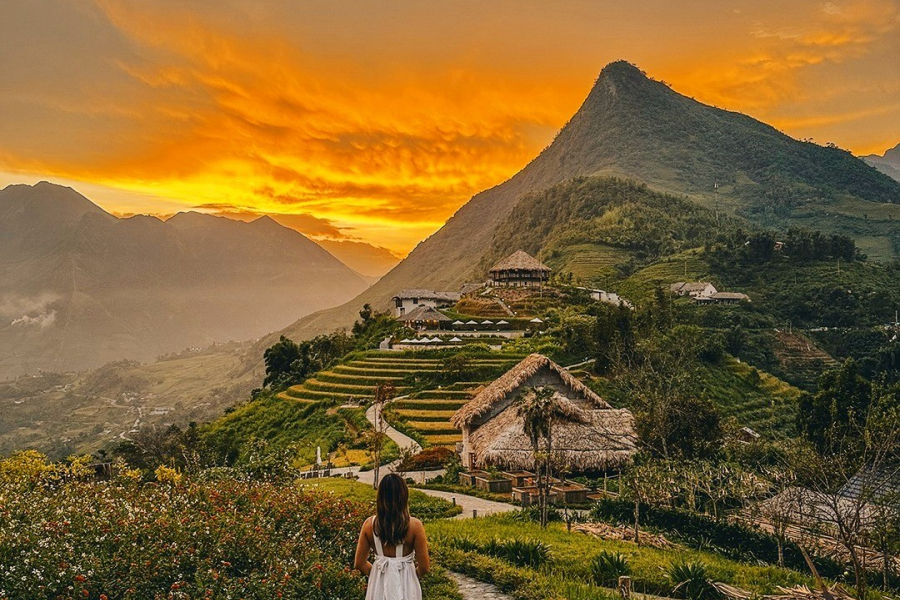Vietnam is a beautiful country with a rich culture, history and natural scenery. Whether you are looking for adventure, relaxation, or cultural immersion, Vietnam has something to offer for every traveler. In this blog post, I will share some tips and recommendations on how to plan your trip to Vietnam, what to see and do, and what to expect from this amazing destination.
A CHANGING COUNTRY
There’s more to Vietnam than the traditional image of rice paddies and conical hats. Here you’ll find a country bursting with energy and forward motion. You’ll feel it in the hum and activity on the streets. You’ll see it in the way Vietnamese welcome you to their homes, invite you to taste their food, and proudly show you their rich culture. You’ll sense it in the options and opportunities all around. Simply put, there’s never been a more exciting time to visit.
Before you go:
- Check the visa requirements for your nationality. Vietnam offers visa exemptions for some countries, visa on arrival for others, and e-visa for most. You can find more information on the official website of the Vietnam Immigration Department: https://www.xuatnhapcanh.gov.vn/en
- Book your flights and accommodation in advance. Vietnam is a popular tourist destination, especially during peak seasons such as Tet (Lunar New Year) and summer holidays. You can find many options for flights and hotels online, but make sure to compare prices and reviews before booking.
- Pack light and smart. Vietnam has a tropical climate, with hot and humid weather most of the year. You will need comfortable clothes that are suitable for the heat and the activities you plan to do. You will also need some warm clothes for the cooler regions in the north or the highlands. Don’t forget to bring sunscreen, insect repellent, a hat, sunglasses, and a raincoat or umbrella. You can also buy these items locally if you need them.
- Exchange some money before you arrive. The official currency of Vietnam is the Vietnamese dong (VND). You can exchange your money at the airport or at banks and money changers in the cities. However, it is advisable to have some cash in VND before you arrive, as you may need it for transportation, food, or tips. You can also use credit cards or ATMs in major cities and tourist areas, but be aware of fees and exchange rates.
What to see and do:
- Explore the vibrant cities. Vietnam has many cities that are full of life, culture, and history. You can visit the capital Hanoi, where you can see the Ho Chi Minh Mausoleum, the Temple of Literature, the Old Quarter, and the Hoan Kiem Lake. You can also visit Ho Chi Minh City (formerly Saigon), where you can see the War Remnants Museum, the Notre Dame Cathedral, the Ben Thanh Market, and the Cu Chi Tunnels. Other cities worth visiting are Hue, Da Nang, Hoi An, Nha Trang, Da Lat, and Can Tho.
- Enjoy the natural beauty. Vietnam has a diverse landscape that ranges from mountains and forests to beaches and islands. You can trek in the Sapa Valley or the Ba Be National Park in the north; cruise in the Halong Bay or the Ninh Binh Province in the northeast; relax in the Phu Quoc Island or the Mui Ne Beach in the south; or explore the Phong Nha-Ke Bang National Park or the Son Doong Cave in the central region.
- Experience the culture and cuisine. Vietnam has a rich and diverse culture that reflects its history and influences from different regions and countries. You can learn about the traditions and customs of different ethnic groups in Vietnam by visiting their villages or museums. You can also enjoy the festivals and events that celebrate various aspects of Vietnamese culture, such as Tet (Lunar New Year), Mid-Autumn Festival, Hung King Festival, or Hoi An Lantern Festival. Moreover, you can taste the delicious and varied cuisine of Vietnam by trying different dishes from different regions. Some of the most famous dishes are pho (noodle soup), banh mi (sandwich), bun cha (grilled pork with noodles), spring rolls (fried or fresh), cao lau (noodles with pork and herbs), banh xeo (crispy pancake), and coffee (with condensed milk or egg).






nice info dear.
I check this site very nice your topic is very intersting.
“Whoa, this HolidayMonk Travel Guide to Vietnam looks like just the right tool for anyone organizing a vacation to this stunning nation! It covers all the essentials for an amazing trip, including suggestions for resorts and homestays, as well as possibilities for both local and overseas trips. I can’t wait to use this book to explore Vietnam.”
nice info dear.
This blog beautifully captures the essence of Vietnam’s diverse and captivating tourism offerings. From the bustling streets of Hanoi to the tranquil waters of Ha Long Bay, each destination beckons with its own unique charm. I particularly appreciated the insights on exploring Vietnam in June, as it provides valuable information for travelers planning their visit during this vibrant time of year. The vivid descriptions and practical tips make it easy to envision oneself immersed in the sights, sounds, and flavors of this enchanting country. Overall, a wonderful resource for anyone considering a journey to Vietnam.
Vietnam is a bustling, varied country with a lot to offer travelers. Every kind of tourist will find something to suit them, from the vibrant hubs of Hanoi and Ho Chi Minh City to the tranquil settings of Halong Bay and Sapa. Anticipating further reading regarding the top homestays and resorts for a cozy stay when I travel again.
Fantastic guide! This is a perfect resource for anyone planning a trip to Vietnam. The tips and insights are super helpful—thanks for sharing.